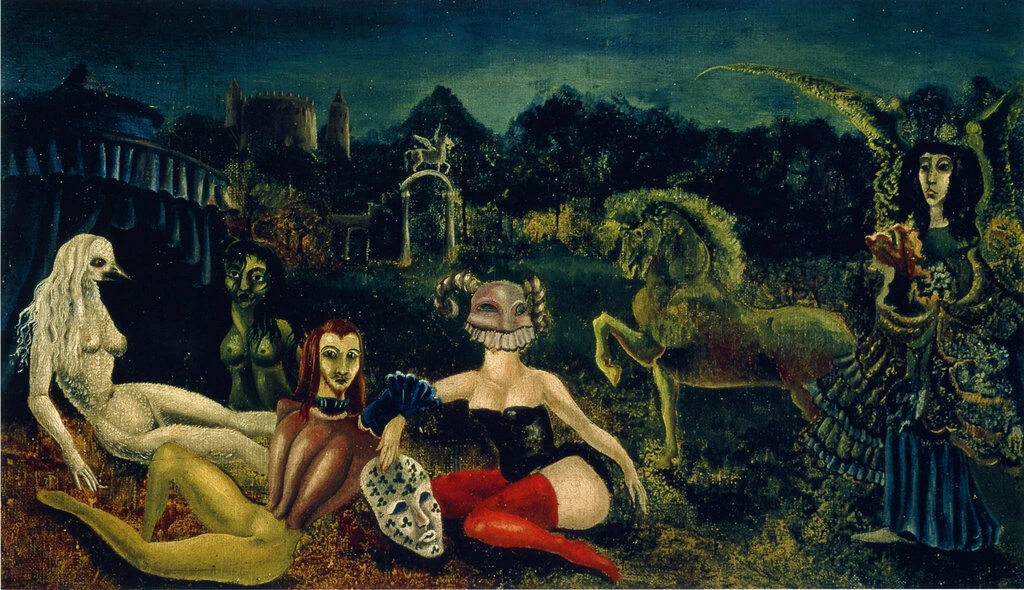

Congratulations to Gloria’s Call team member, Composer Miriam Cutler, on her two Primetime Emmy nominations for CNN Films’ RBG and Love Gilda in the OUTSTANDING MUSIC COMPOSITION FOR A DOCUMENTARY SERIES OR SPECIAL category.
Female Surrealists Re-emerge in 2 Startling Shows
NYTimes.Com – June 13, 2019
Leonora Carrington’s fantastical figures emerge in the 1953 painting “And Then We Saw the Daughter of the Minotaur” at Gallery Wendi Norris: a seated goddess-cum-mystical figure with a cow’s head and a green moth-flower unfurling like a gigantic leaf.CreditCreditEstate of Leonora Carrington/Artists Rights Society (ARS), New York; via Gallery Wendi Norris
Leonora Carrington and Remedios Varo, known for their mystical styles, flourished in Mexico.
Some of the best paintings of Surrealism were made in Mexico during the 1940s and ’50s, by women. The proof is here, in two astounding exhibitions: “Surrealism in Mexico,” a survey at the Di Donna Galleries, and in a pop-up show brought to us by Gallery Wendi Norris of San Francisco, an overview of the work of the brilliant British-Mexican painter and writer Leonora Carrington.
These shows hardly exhaust their subjects, but they are sufficiently concentrated and together they put on view more Mexican Surrealism than we have seen here in some time. They are mere blocks apart on Madison Avenue in delightfully different settings. Carrington’s luminous Gothic paintings, are displayed in a spacious, nearly bare white cube that seems to amplify the paintings’ magical, often masked creatures and tinted atmospheres. The show culminates in six sculptural masks that Carrington designed in 1976 for her never-produced play, “Opus Siniestrus: The Story of the Last Egg.”
At Di Donna, works by 18 artists — including five paintings and a painted sculpture by Carrington, and seven works by the Spanish-Mexican painter Remedios Varo, her good friend and stylistic compatriot — are shown against red walls and dark wood that make everything glimmer.
Erin O’Neill’s meticulous chronology in the Di Donna catalog traces the complex story of Surrealism in Mexico. Many of the country’s young artists, like those from other parts of Europe and Latin America, found their way to Paris in the late 1920s and ’30s. The French capital was alive with Surrealism and its contagious emphasis on the subconscious, dreams, startling juxtapositions and general otherworldliness.
As World War II approached, many artists found their way to, or back to, Mexico, where living was relatively cheap and the country’s borders open, especially compared with the United States. In addition the Surrealist mind could be set abuzz by Mexico’s variety of climes and topographies and the layers of cultures, from present day back to pre-Columbian. André Breton, Surrealism’s high priest, said as much when he visited for four months in 1938.

Carrington’s “Down Below,” from 1940. The artist’s imaginary settings, characters and palette change with each canvas. CreditEstate of Leonora Carrington/Artists Rights Society (ARS), New York; via Gallery Wendi Norris
Read more here.
